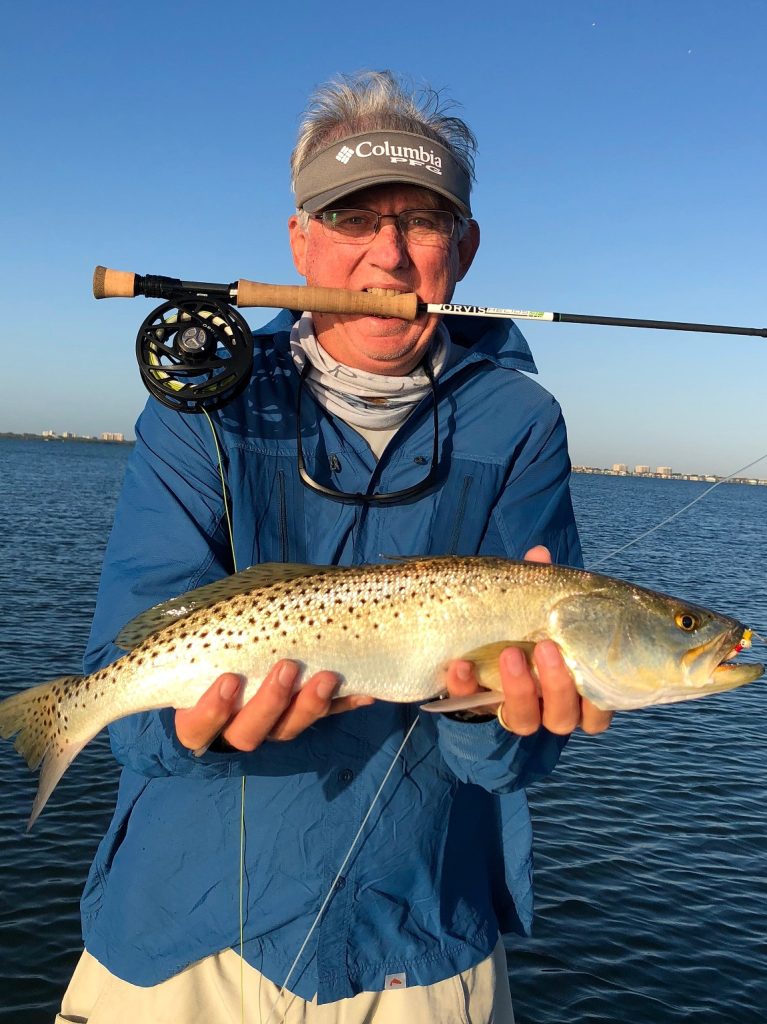Fly fishing the deep grass flats in Sarasota
The topic of this article will be fly fishing the deep grass flats in Sarasota. Florida is flat, it is a geographical fact. This is especially true in the southern half of the state. Visiting anglers are often surprised to learn how shallow our waters are, but the reality is that the geography outside the water usually continues underwater. The result of this is acres and acres of relatively shallow grass flats in Sarasota and throughout the state.
A flat can basically beat defined as a large area of similar depth. This depth can be very shallow, such as 1 foot or so. Many anglers associate these type of very shallow flats with places such as the Florida Keys and the Bahamas where bone fish and permit are pursued. However, a flat can be much deeper than that. In the Northeast, striped bass are caught on flats in 20 to 40 feet of water.
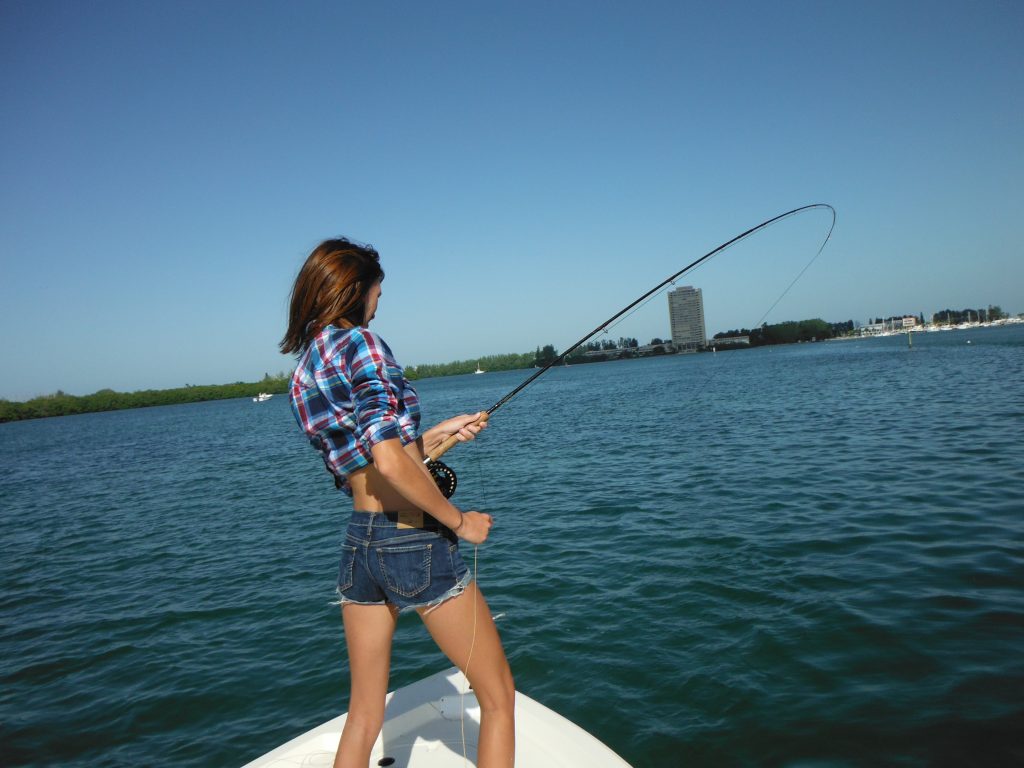
The key to life underwater in Sarasota, Florida where I fish is aquatic vegetation. In essence; grass. This is where crustaceans such as crabs and shrimp hide along with many species of bait fish. Of course, this in turn attracts game fish and continues the circle of life. Northern anglers refer to these as “weed beds”, but here in Florida we call them “grass flats”. It really is the same thing.
My name is Capt. Jim Klopfer and I am a fly fishing guide in Sarasota, Florida. Our area offers fly fishing anglers a variety of opportunities. These include fishing the inshore Gulf of Mexico for mackerel and false albacore, working the shoreline cover for snook and redfish, and fishing creeks and rivers in winter for big jacks. However, the technique that I use most often on my Sarasota fly fishing charters is drifting the deep grass flats.
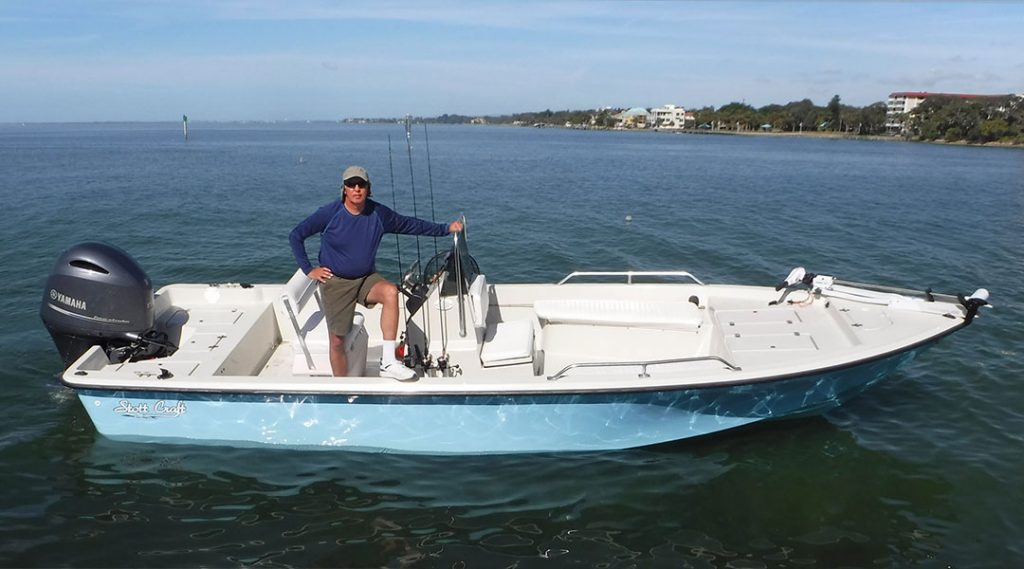
Fly fishing the deep grass flats in Sarasota
The reason that I spent so much time fishing the deep grass flats is simple, they produce both action and variety. It is a relatively easy way for fly fishing anglers of all skill levels to experience success. Spotted sea trout are the most commonly caught species. However, Spanish mackerel, ladyfish, bluefish, pompano, jacks, snapper, flounder, cobia, sharks, and even tarpon are encountered in these areas.
Read my comprehensive article on fly fishing for speckled trout
The technique that I use is pretty straightforward. I position the boat upwind and up tide of the flat that I want to fish. As the boat drifts along with the wind and tide, the angler cast the fly out in front of the boat, allows it to sink for several seconds, then retrieve it back in. That’s pretty much it! It is an efficient way to cover a decent amount of water in search of fish. Of course, there are nuances to this technique which I will cover in more detail.

The same basic saltwater tackle used for other species will work fine when fly fishing the deep grass flats in Sarasota. An 8wt outfit is fine for most situations. Anglers can certainly go down to a 7wt or even a 6wt if desired. For the most part, the fish are not huge. Conversely, they can bump it up to a 9wt if needed, such as when big jacks are on the prowl or when casting a heavy fly in the wind.
Best tackle and flies for fishing the deep grass flats in Sarasota
One of the most important aspects to this style of fishing is to have some sort of sinking line. The biggest mistake I get with anglers is them showing up with a floating line only. In most instances, the fly will simply not get down deep enough to maximize the potential number of strikes. It may not seem like a lot, but 2 feet can really make a big difference.

For this reason, the line that I use most often is an intermediate sink tip line. Where possible, I prefer the sink tip portion to be clear as this really in effect adds to the length of the leader. I find this type of line to be the easiest for most anglers to manage while still getting down deep enough in the water column. More experienced anglers can use a full sinking line as well and will most surely be successful.
I keep my leaders fairly simple for this style of fishing. My normal leader consists of 5 feet of 50 pound fluorocarbon leader followed by 4 feet of 30 pound fluorocarbon leader. The 30 pound leader is fine as a bite tippet in most cases. If large Spanish mackerel or bluefish are around, I will bump up the bite tippet or even add a short piece of wire, though I rarely do this. Since I use weighted flies most of the time, there are no issues with the leader not turning over.
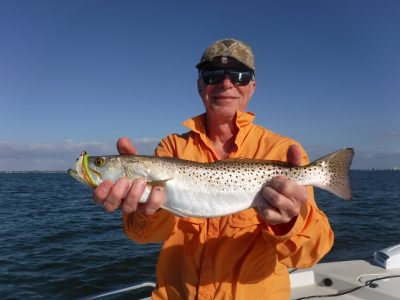
Top fly patterns for the Sarasota deep grass flats
Fly selection is pretty basic as well. I fish with a Clouser Minnow pattern almost all the time. It can be tied in any color combination that I want along with different weighted eyes. The result is a box of flies that will cover just about every angling situation for those fly fishing the deep grass flats in Sarasota.

However, any bait fish or shrimp pattern will also produce. I do use a D.T Special variation tied on a long shank hook to reduce cutoffs when Spanish mackerel and blue fish are around. As for colors, I am most apt to grab a chartreuse over white or white over white fly, though sometimes bright colors such as yellow and red will produce, particularly on ladyfish.
As with all other forms of saltwater fishing, tides are a factor. However, the height of the tide is much less of a factor on these deep grass flats than it is on the shallow flats. No matter what the tide, there will be enough water for fish to move around and feel comfortable. I really have no preference as to incoming or outgoing tide, as long as it is moving.
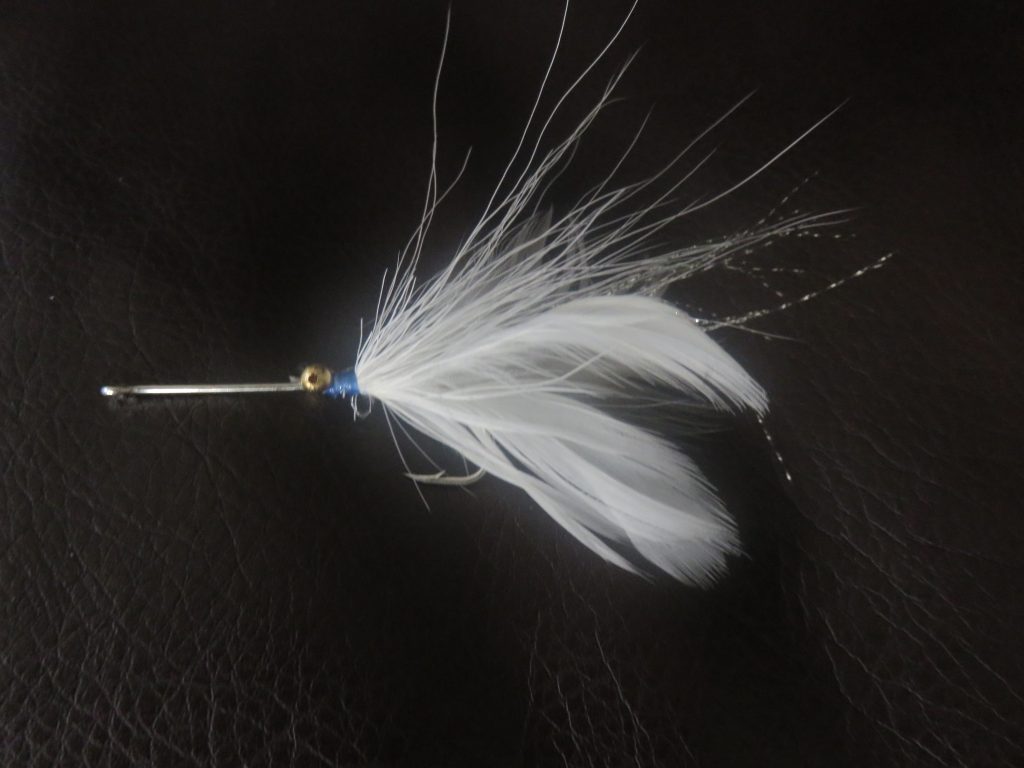
One thing that I have definitely found makes a difference is choosing a flat where the wind direction will push the boat in the same direction that the tide is moving. This results in a nice, efficient drift that covers the flat. Trying to fish a flat where the wind and tide oppose each other usually result in the boat crabbing sideways and the line going under the motor.
Techniques for fly fishing the deep grass flats
So, let’s get more into the actual fishing technique in more detail. When the wind is light or fairly light, it is best to cast the fly straight out perpendicular to the boat. There will be enough time for the fly to sink a few seconds before the angler begins his or her retrieve. If the breeze is a bit stronger, it is best to cast 45° instead of 90°. Otherwise, the boat will drift up on the fly before the retrieve can begin.
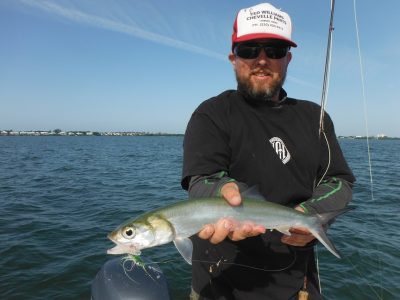
Often times when casting to the side a bit, the strike will occur at the end of the stripping as the line speeds up. This is very similar to freshwater trout anglers swinging a nymph where the take occurs as the fly speeds up when the current catches the line.
In either case, the fly is allowed to sink several seconds. As in all forms of fishing, successful anglers very both the sink time in the retrieve until a productive pattern emerges. I have found that the best retrieve is usually a fairly sharp 12 inch to 18 inch strip followed by a significant pause. The take often occurs on this pause, as the fly just covers their or slightly sinks, simulating a wounded bait fish.
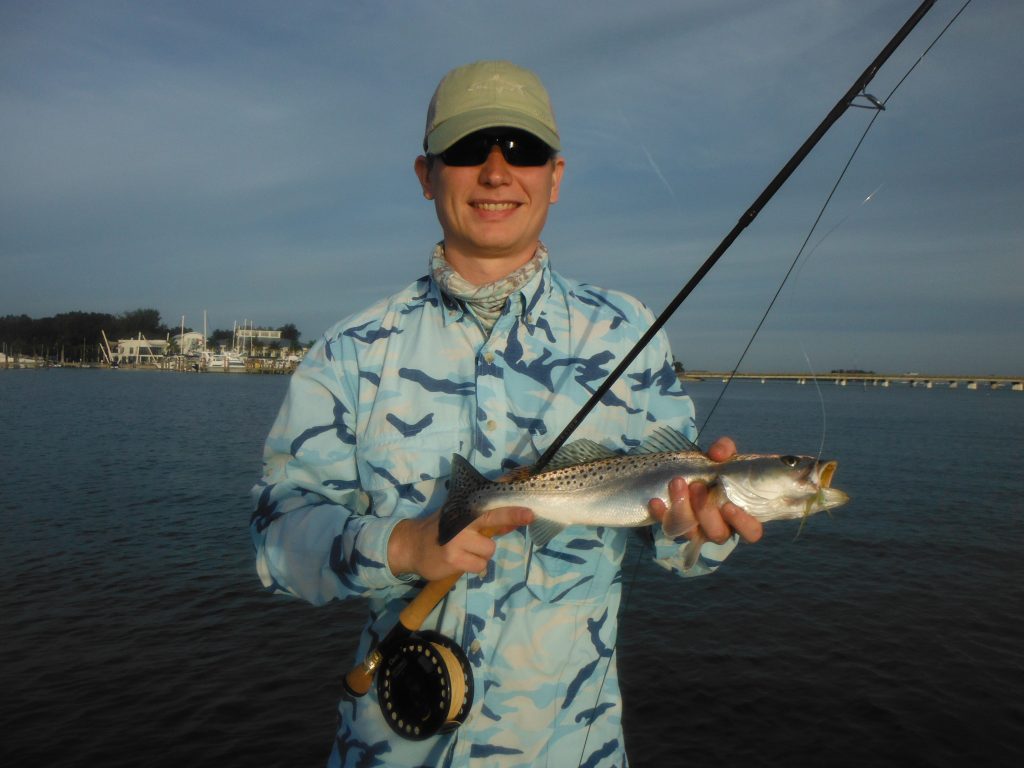
When a take occurs, I recommend that anglers use the “strip set” technique. Stripping should take place with the rod tip very low, almost at the surface of the water. When the take occurs, the angler should very sharply make a long past strip with the stripping hand. Once the line becomes tight the rod tip can be raised in a smooth fashion. One issue I run into on my fly fishing charters in Sarasota is freshwater anglers who want to set the hook by sharply raising the rod tip. This simply does not work well in this application.
Setting up a good drift
One of the factors that we deal with when fly fishing the deep grass flats in Sarasota is the fact that there often is not a lot specific structure to hold fish. Some of these grass flat areas are quite large and fish will often move about from one day to the other. The best approach is to fish a flat for 20 minutes or so and move on if it is not productive.
Ideally, I will choose a flat and set up a drift were different depth will be covered. For example, I like to start shallow, in 3 to 4 feet of water, then have the breeze pushed the boat out to seven or 8 feet of water. Often times, fish will be encountered at a specific depth. It is surprising how just a foot or two can really make a big difference.
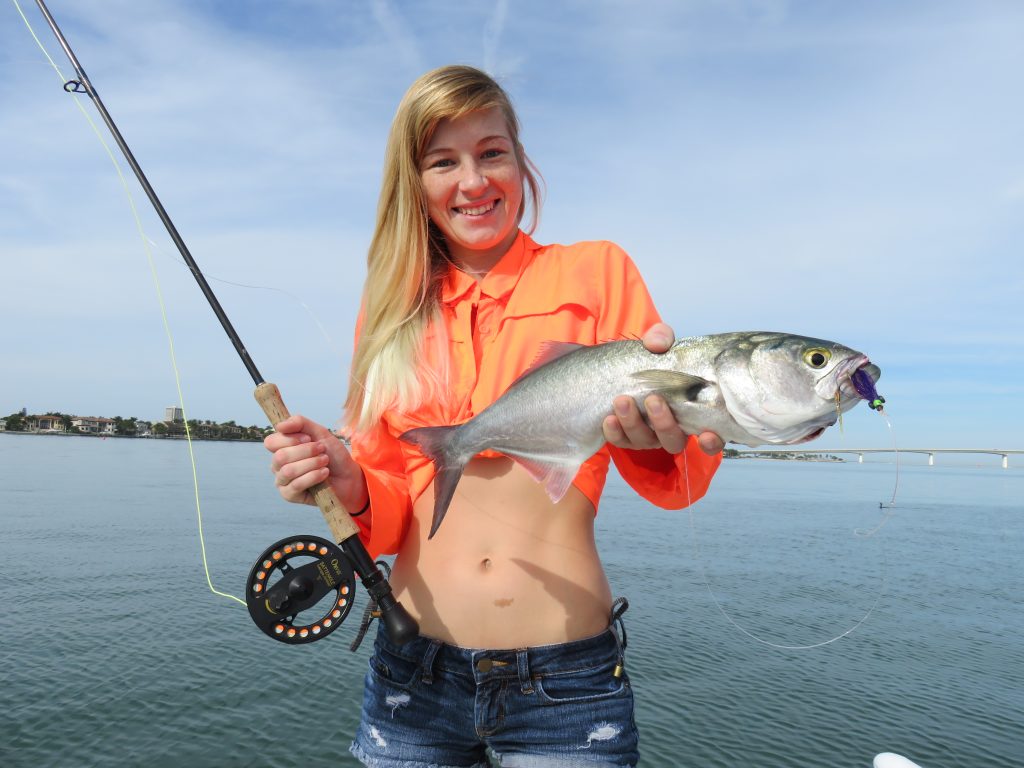
As in all saltwater fishing, successful anglers keep their eyes open. The slightest “pop” on the surface can be an indication that a large school of fish is feeding below. Any disturbance on the surface, even if it just appears to be bait, is worth a try. Obviously, birds diving excitedly are an excellent indication of game fish feeding in the vicinity. Selects can also appear on the surface, indicating a spot where feeding has been taking place.
In conclusion, this article on fly fishing the deep grass flats in Sarasota will help anglers be more successful when action and variety are the goals!
